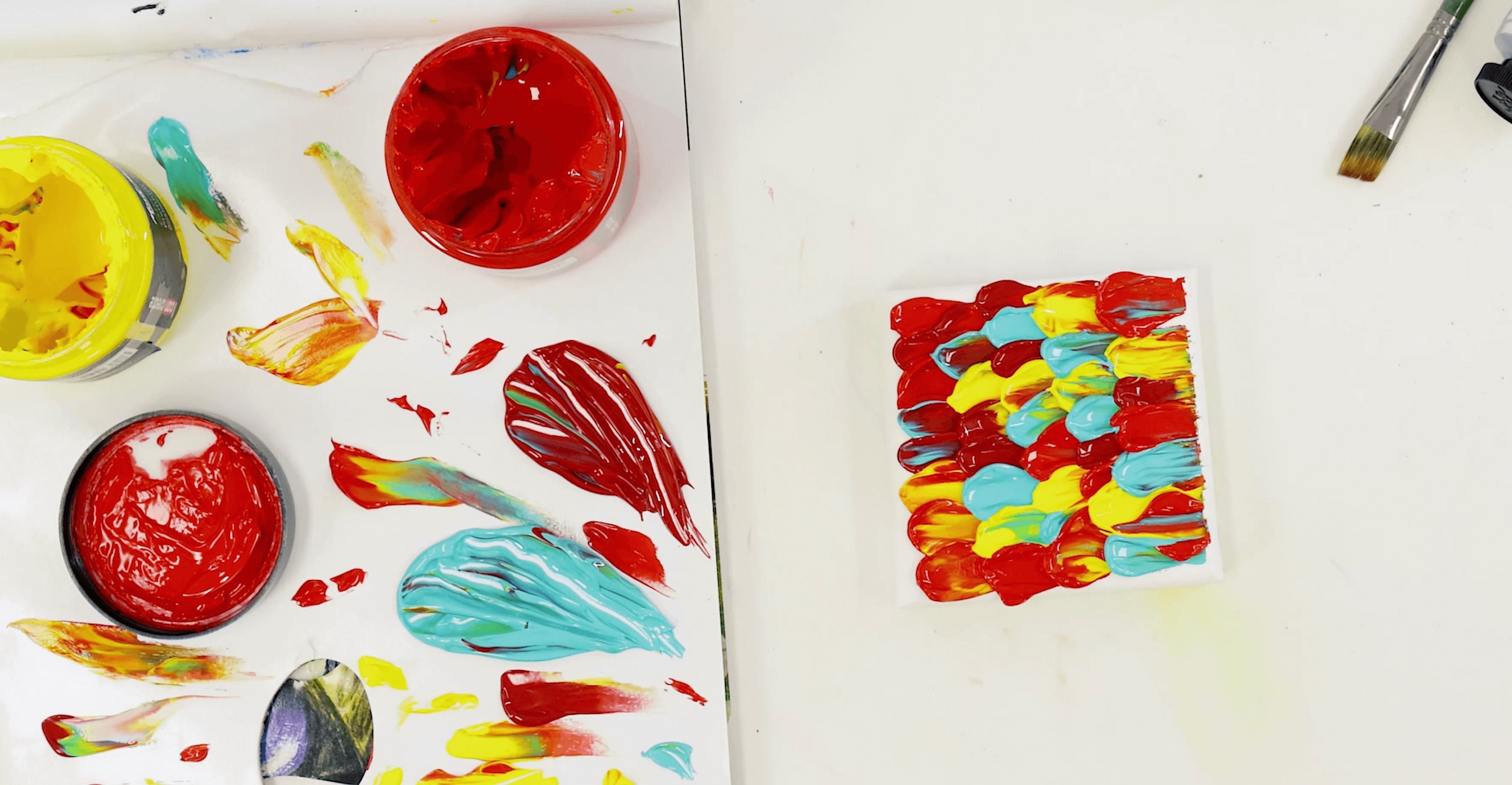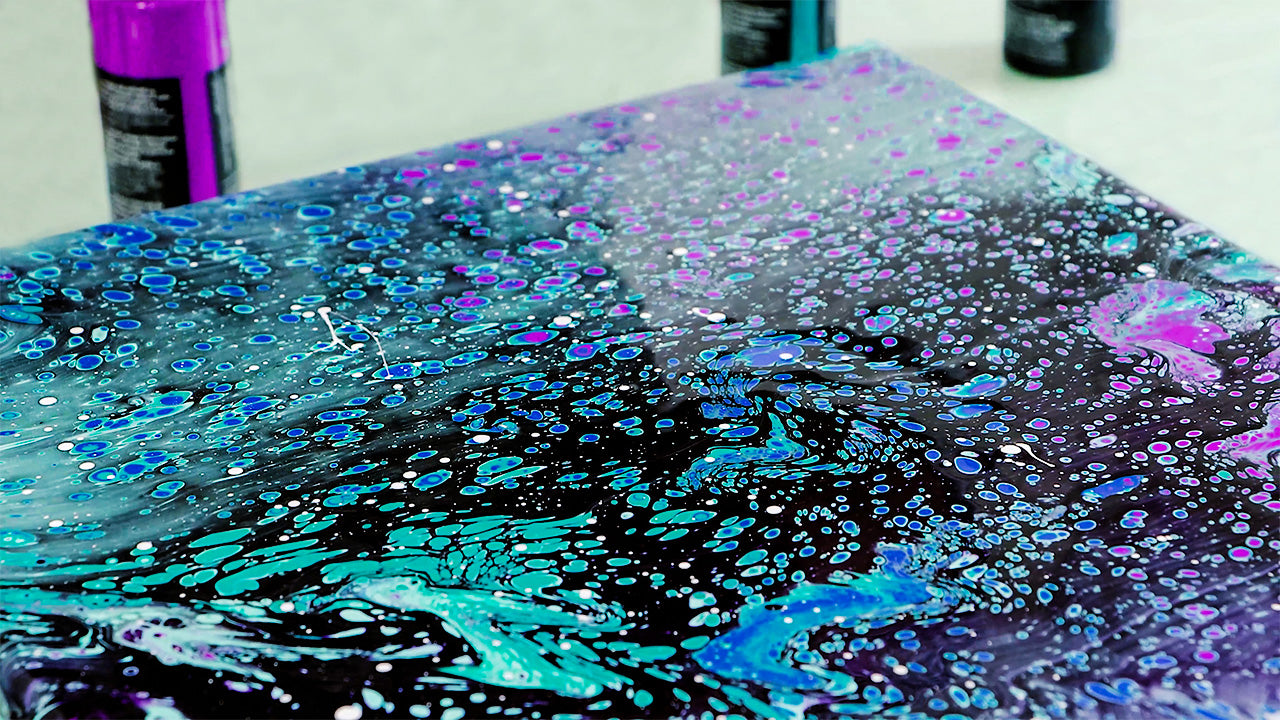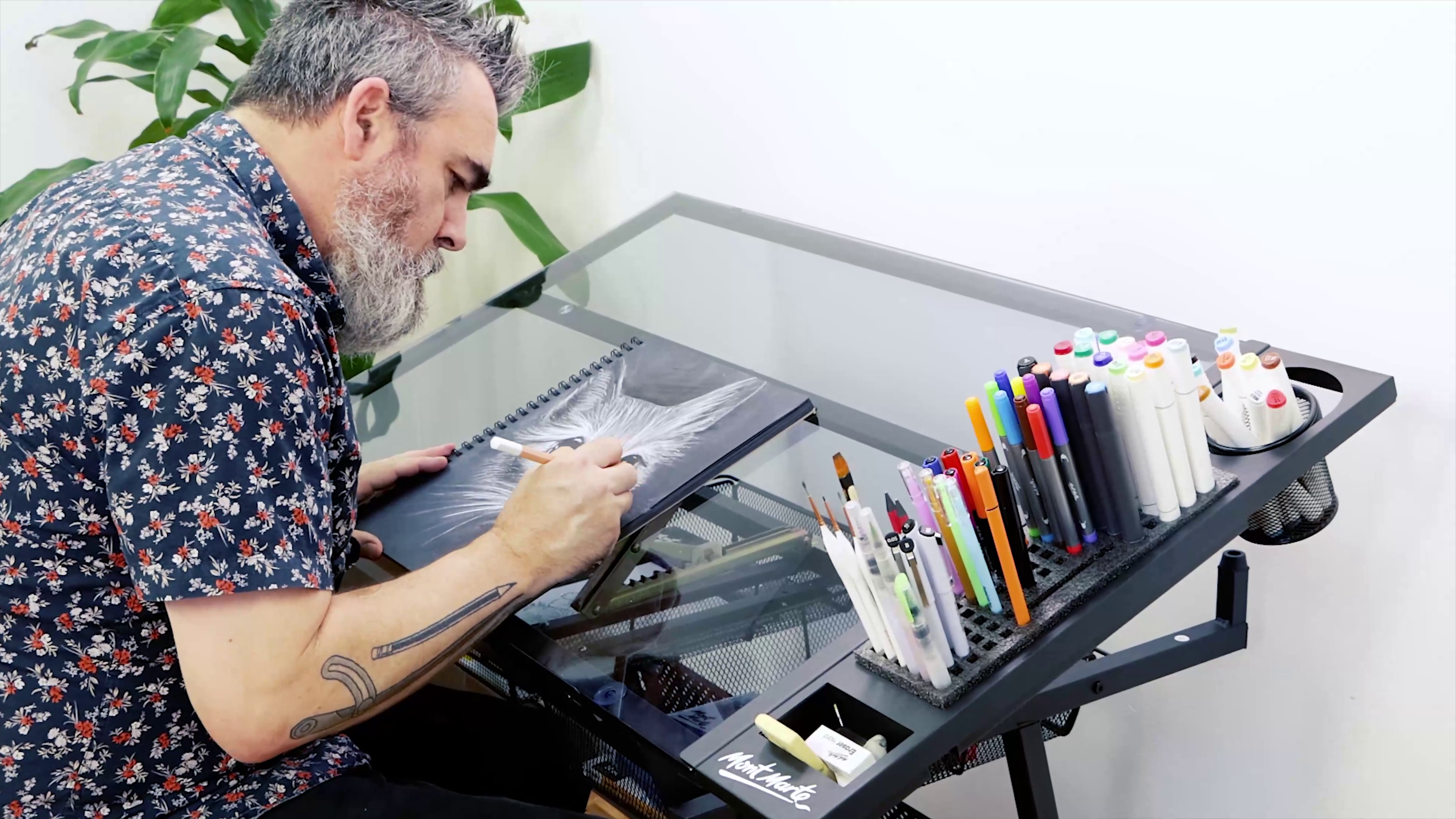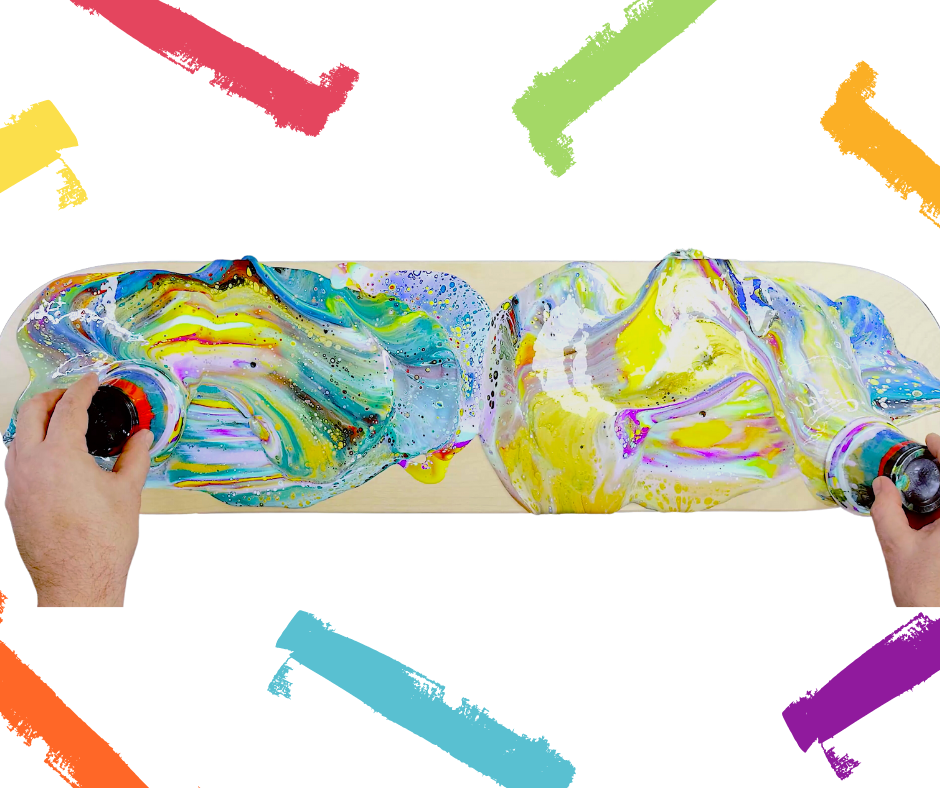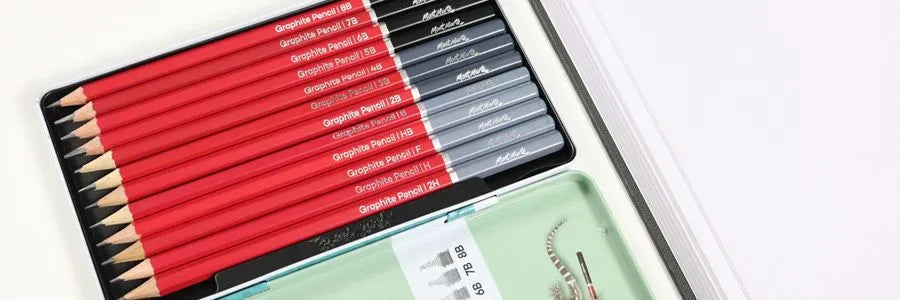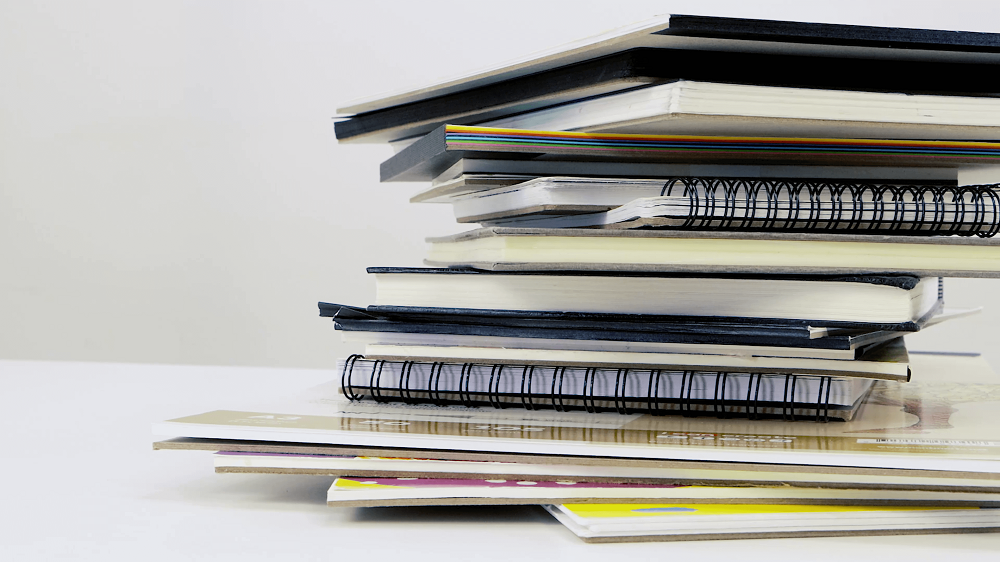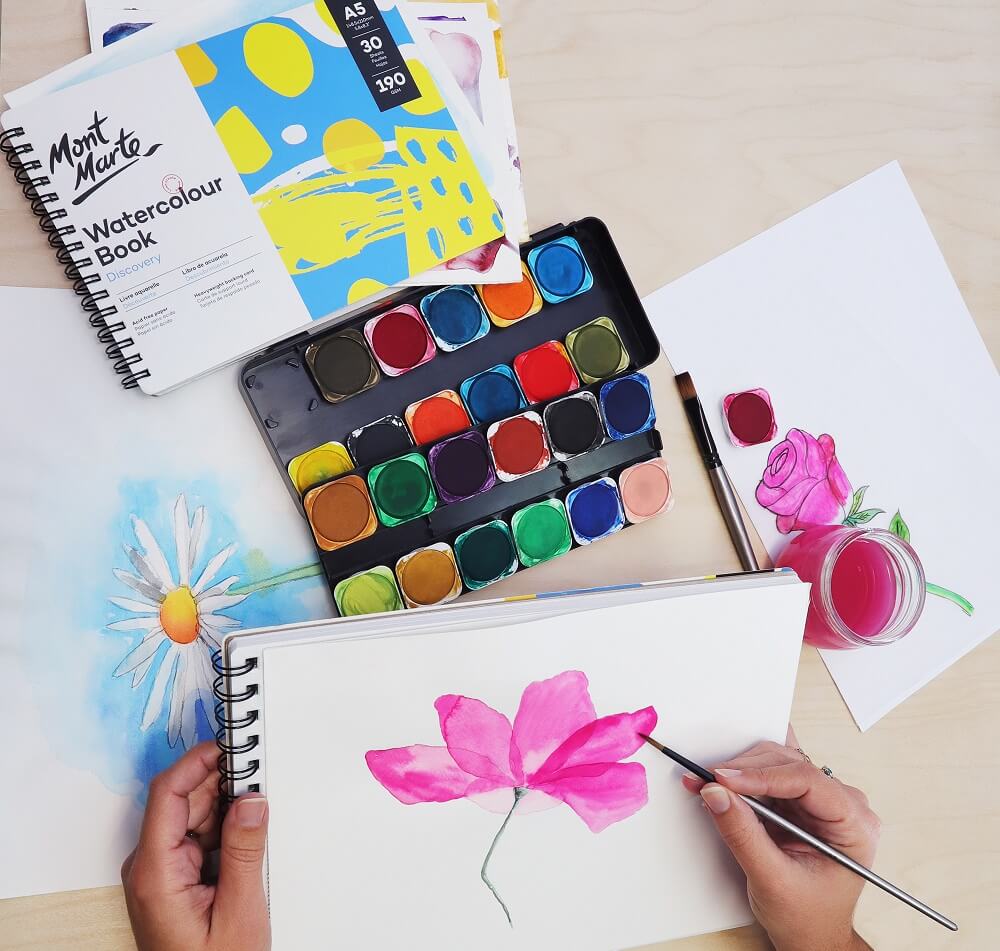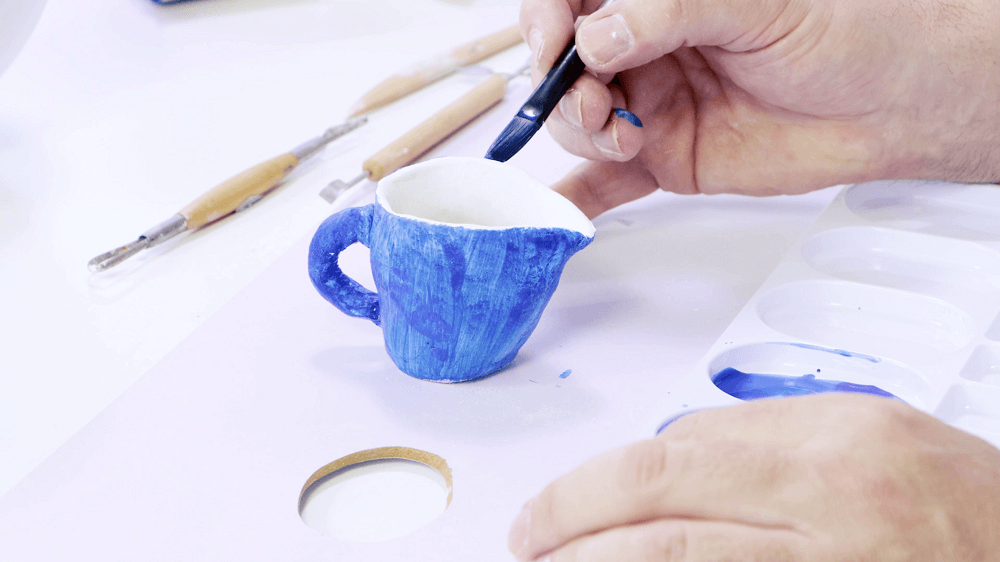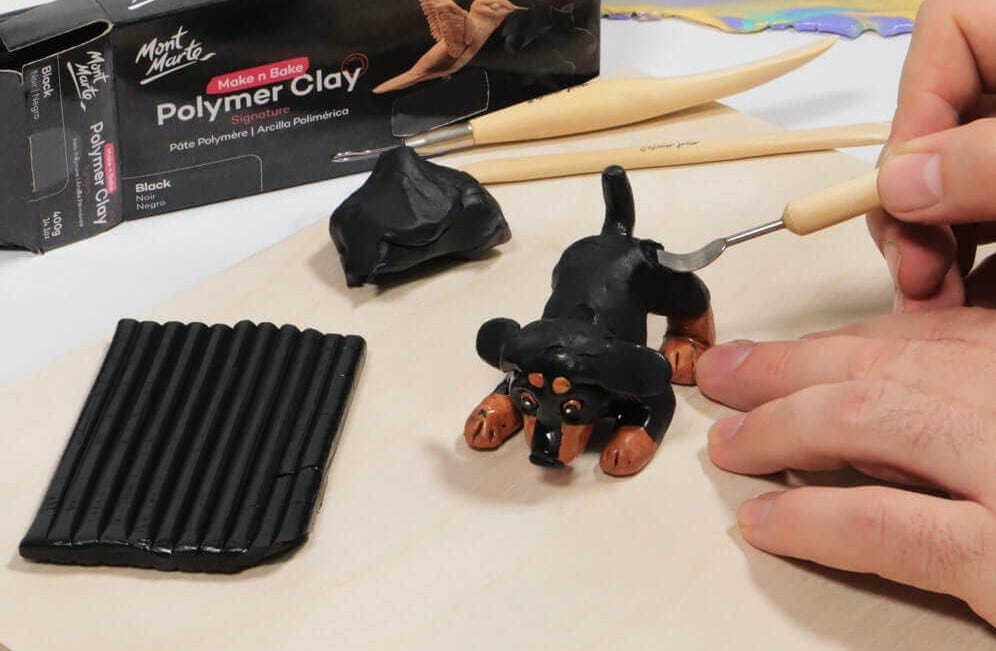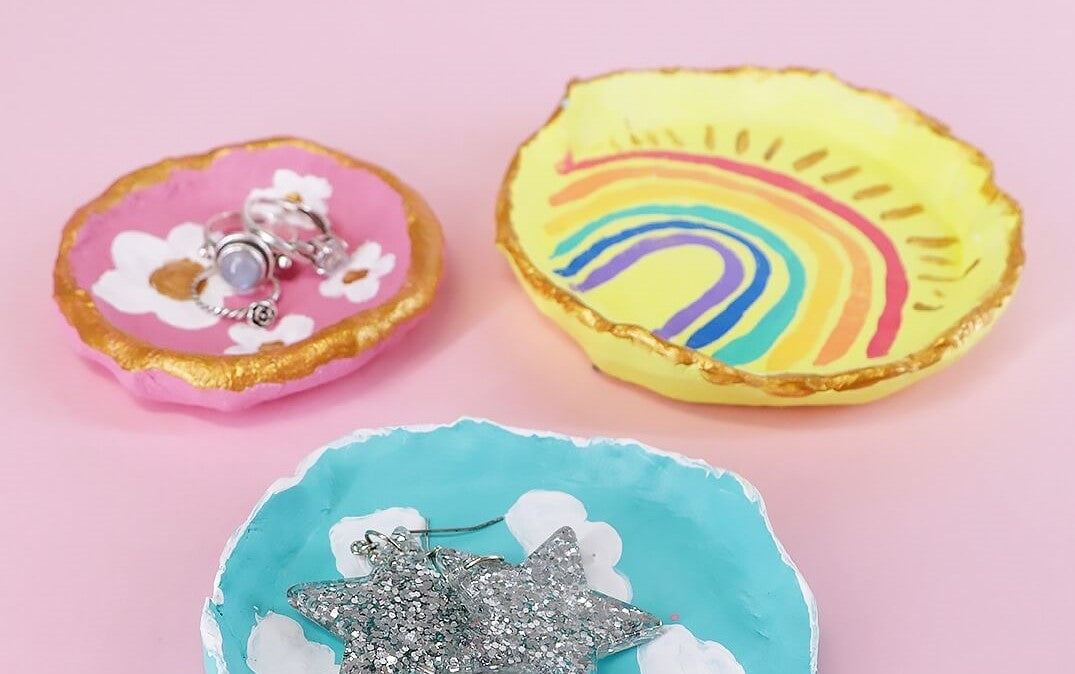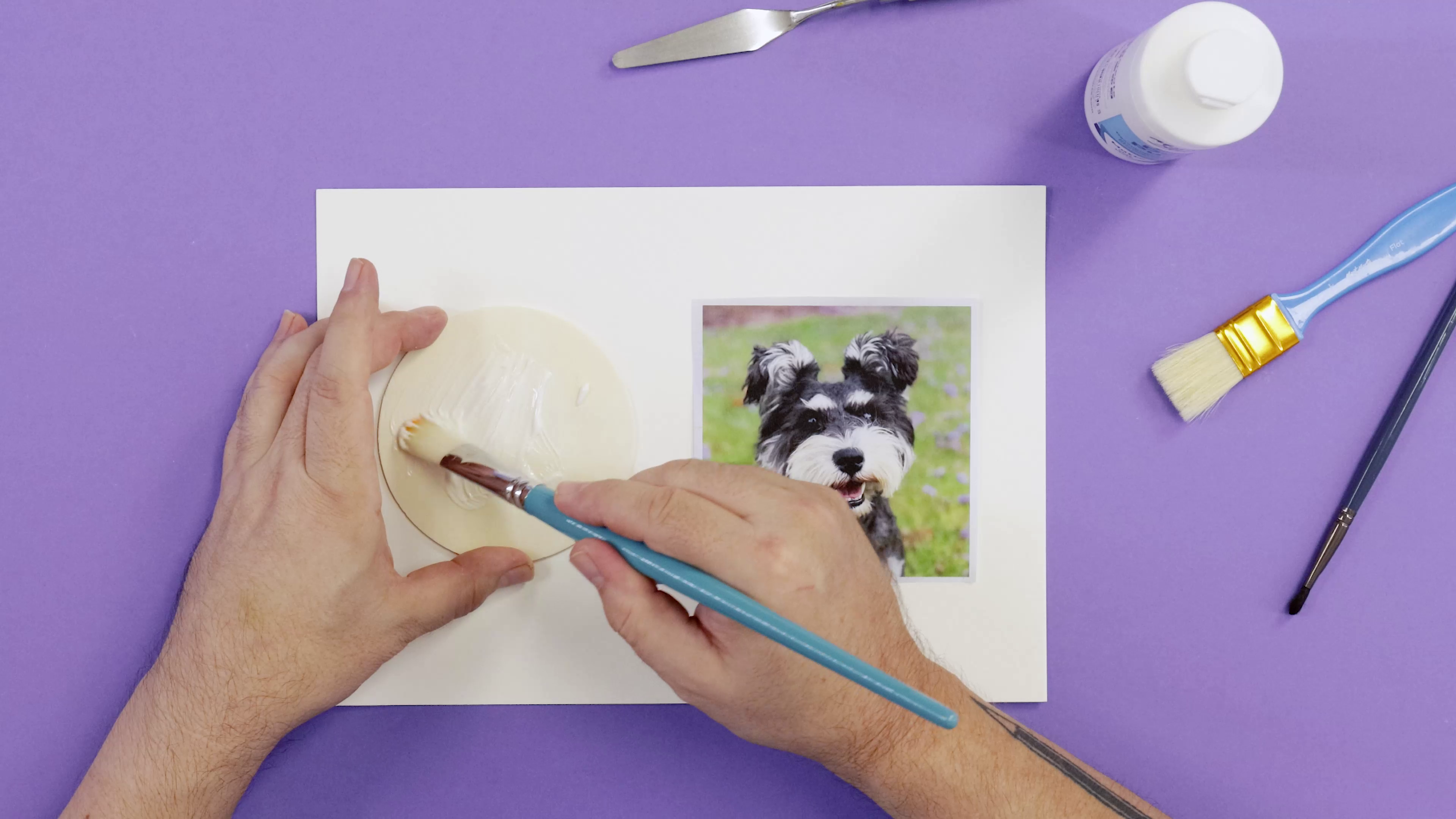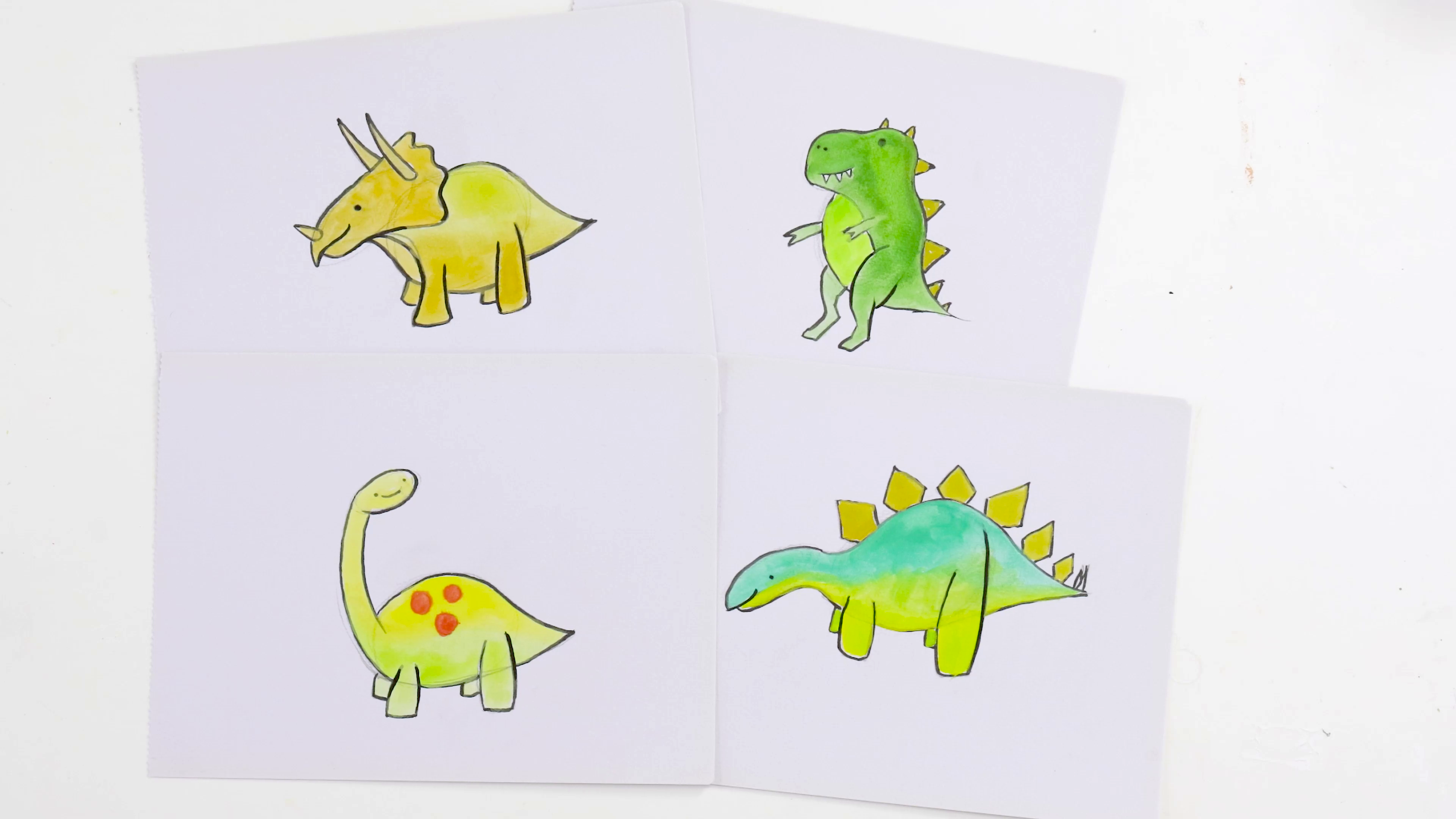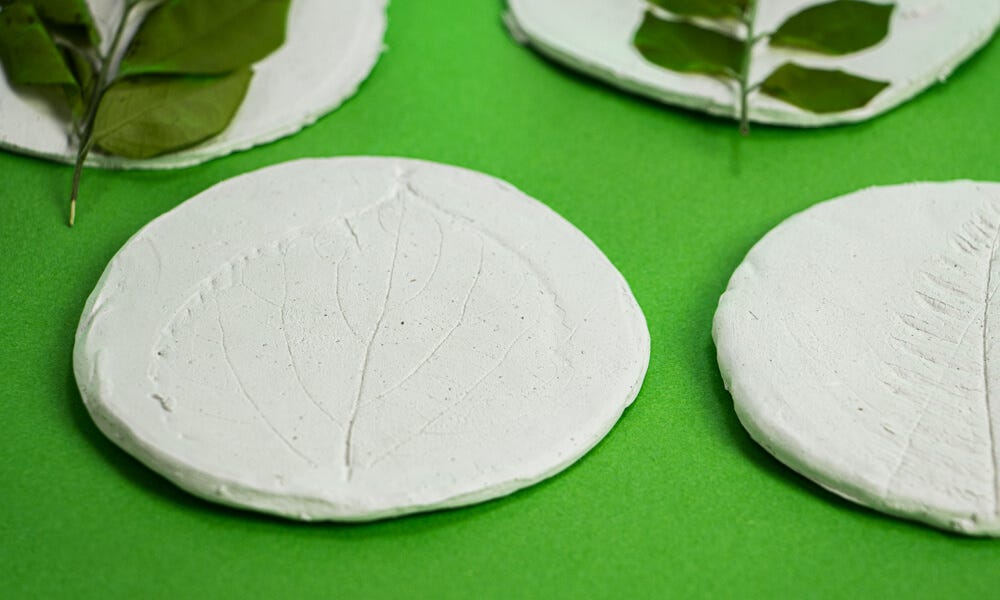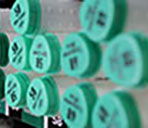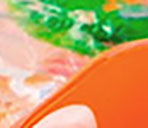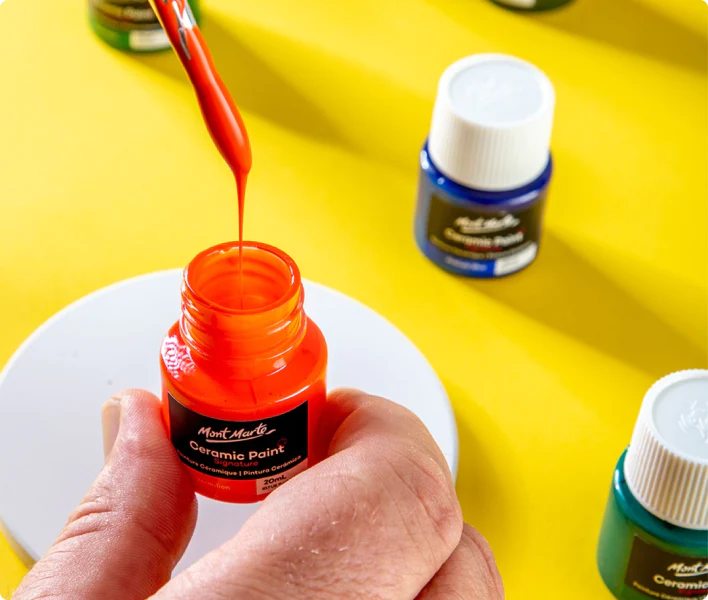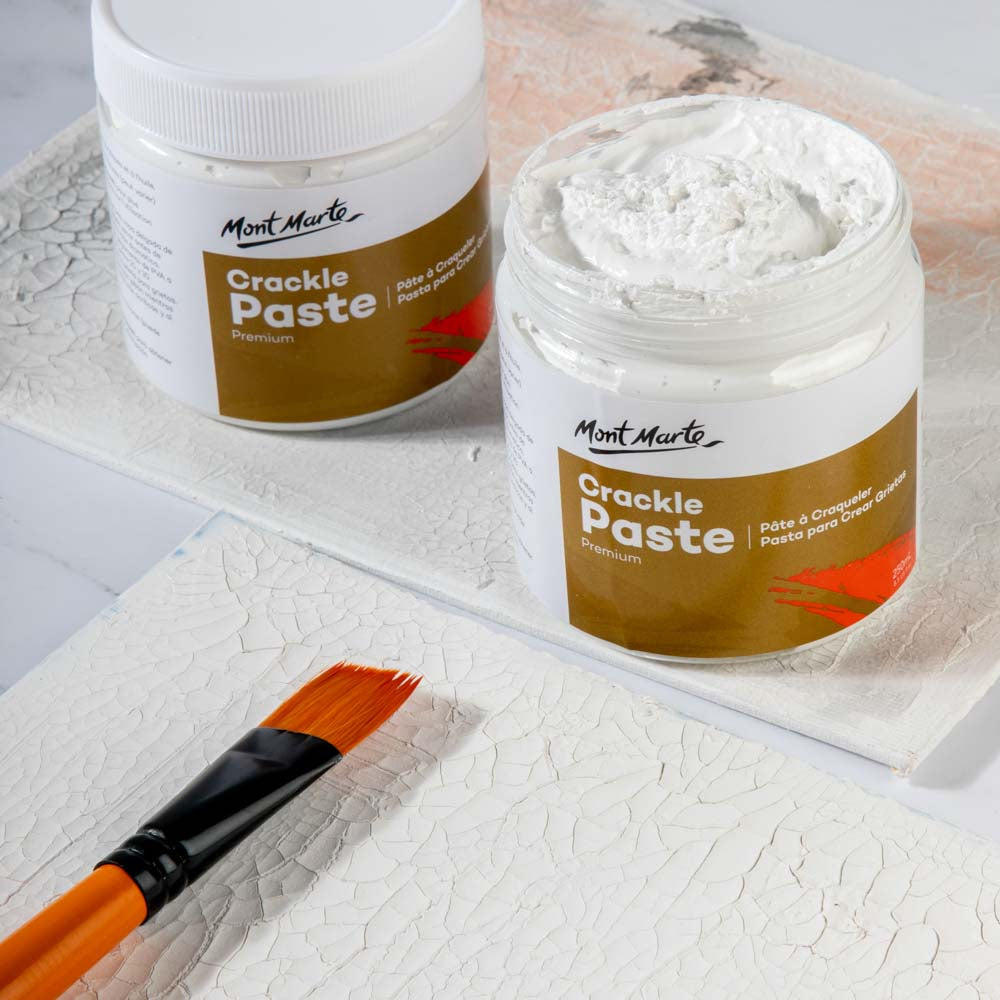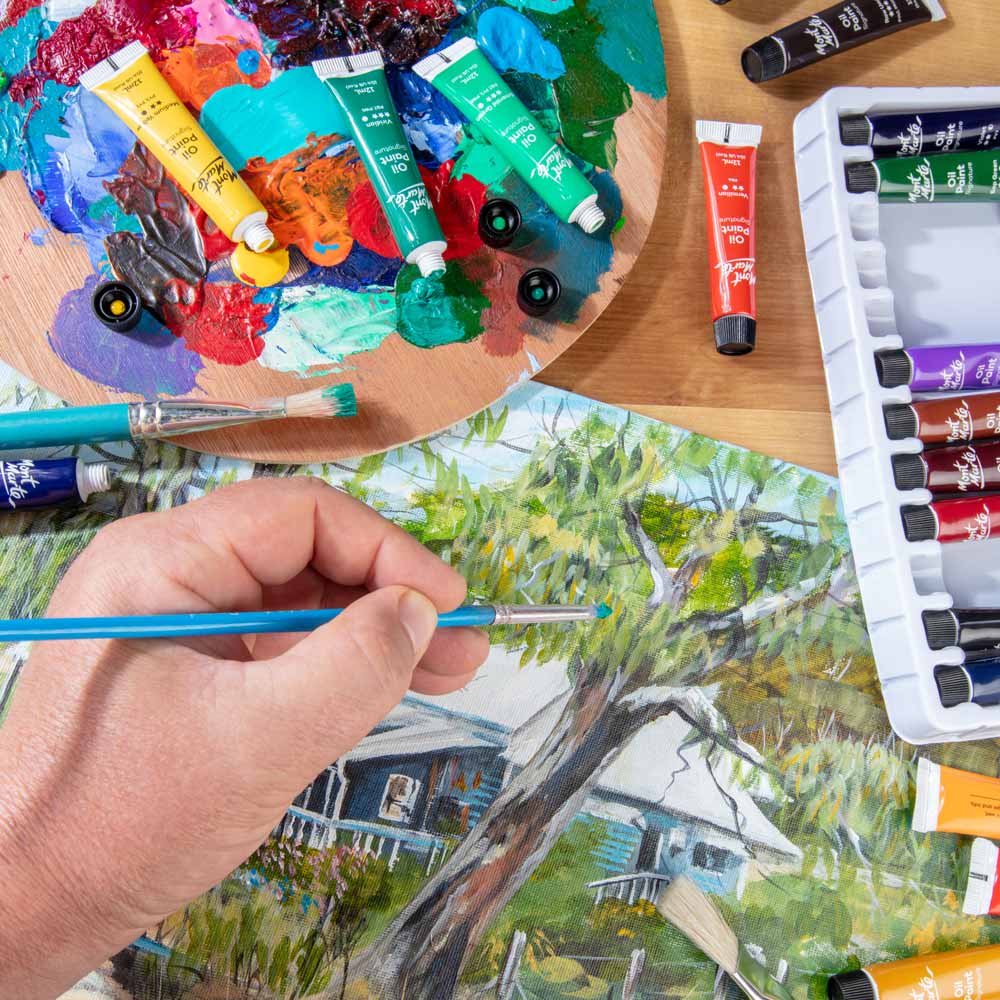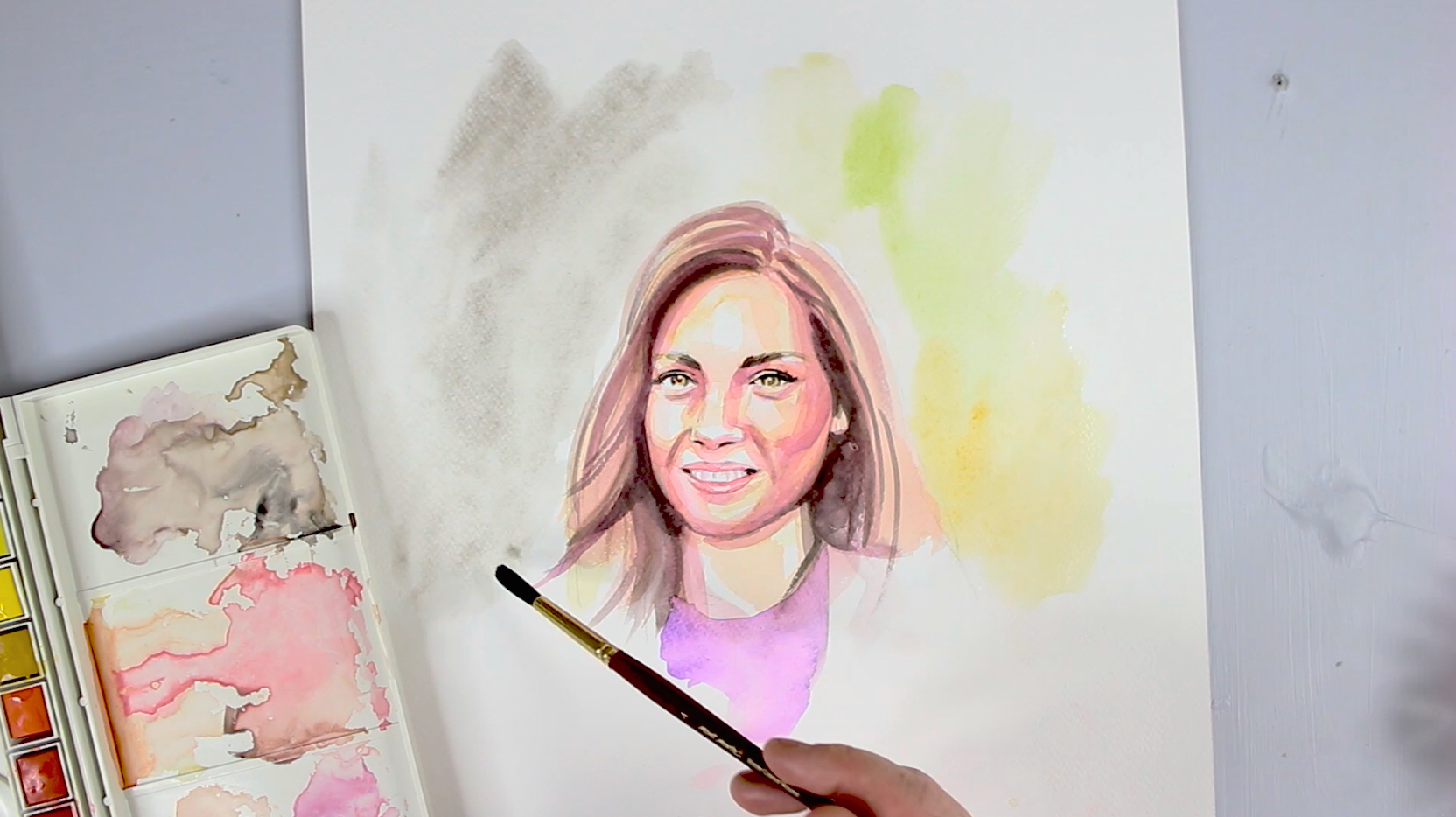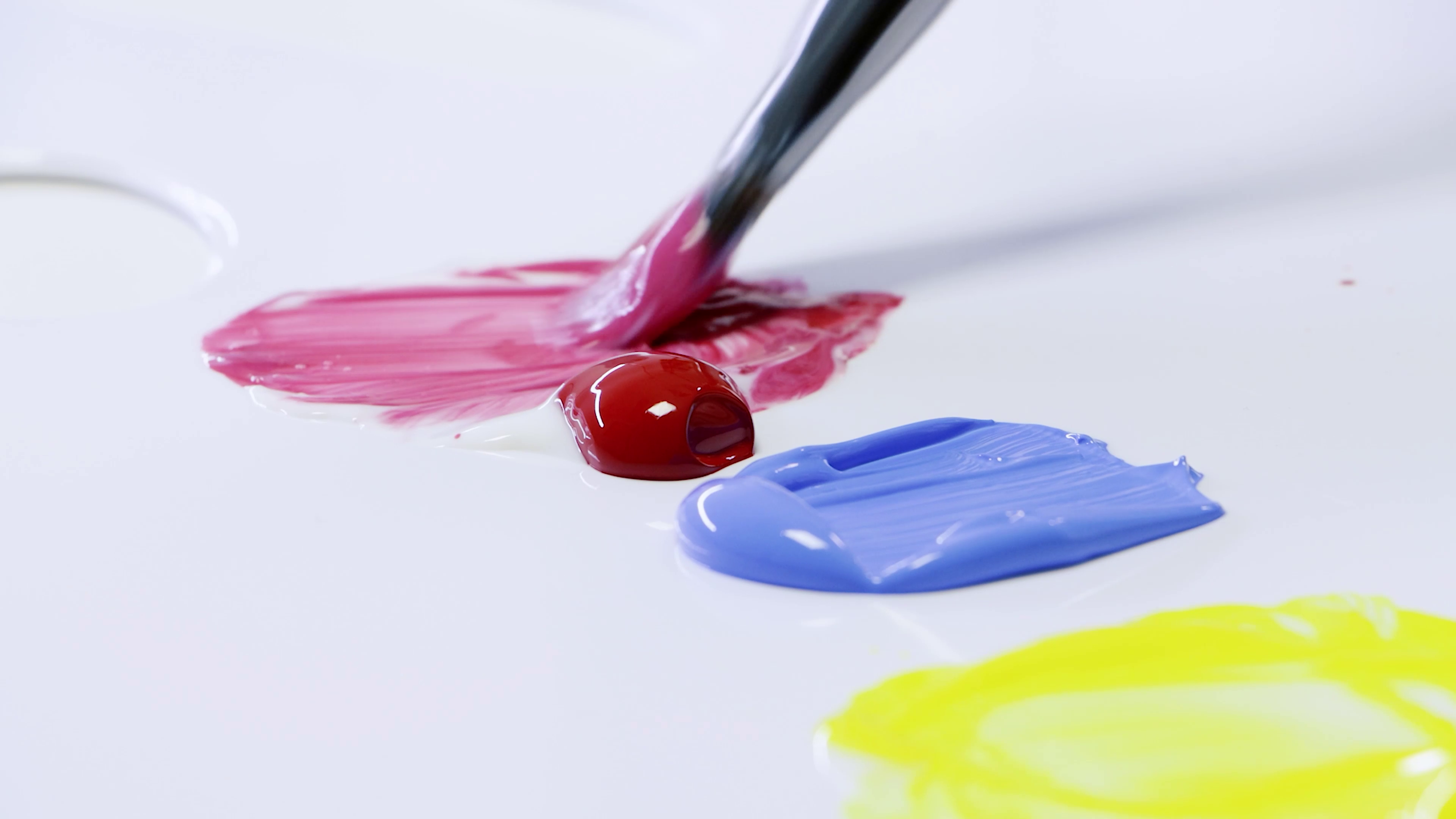Creators ask us interesting things all the time, so we thought it was a good idea to make an art question and answer for our site! Below are some commonly asked questions but if you have any more, let us know on our socials or contact us on our site. We’re always happy to help!
Can you use acrylic on ceramic?

Yes, you can, but regular acrylics won’t adhere as well to the surface as our purpose-made Ceramic Paint. Ceramic Paints can be heat set to bind to the surface more strongly, so if you’re using standard acrylics, we suggest being careful with the surface after painting. Depending on how much wear your ceramic surface experiences or the environment it’s kept in, the paint can chip and deteriorate over time (because it doesn’t have a textured surface to key onto).
If using acrylics, we recommend applying a thin coat rather than a thick coat as this will be less likely to catch and wear. Making sure the ceramic surface is very clean before painting (using isopropyl alcohol or methylated spirits) will also help the paint key onto the ceramic better.
Overall, for the best results, try Ceramic Paint!
How to use Mont Marte Crackle Paste?

Crackle Paste can be used to add texture and interest to your artwork, but it's important to apply it correctly. This paste works best on rigid surfaces like canvas, timber, panels, some plastics, and plaster. Unfortunately, it's not compatible with cardboard or paper as these materials can't support the cracking process.
To get the best results with Crackle Paste, apply a consistent coat over a smooth, glossy undercoat. PVA Glue, Gesso, and glossy acrylic paint (e.g., Dimension Acrylic) work well for this purpose and using a flat taklon brush is great for thin, even application. Avoid spreading the paste too thickly, as this can prevent proper cracking.
For smaller, subtle cracks, apply a thin layer of the paste and allow it to dry before painting. For larger cracks, apply a thin layer of PVA Glue to your surface first, wait 20-30 minutes for it to become tacky, and then apply the crackle paste. A bit of experimentation will help you find the best approach for your specific project, so play around with the product before committing to your final artwork!
Is gesso a primer?

Gesso acts similarly to a primer but with some differences. Mont Marte Premium Gesso is acrylic-based, unlike standard primers which are usually oil-based or enamel. Gesso is made to prep porous surfaces such as canvas, wood, and some plastics, providing a sealed and smooth surface for painting.
Texture Gesso Premium is ideal for both wet and dry media, preparing your surface to bind closely with your chosen medium. Apply evenly with a wide brush or mix with an acrylic thinner until the gesso is the consistency of milk and apply with an airbrush.
So yes, you can prime with gesso, but it’s technically different to standard primers in terms of formula!
What’s the benefit of drawing on gesso?

Applying Premium Clear Texture Gesso before or after using your chosen media can elevate your artwork. It creates a textured surface that improves the adhesion of acrylic and oil paints, as well as sketching media like pastels and pencils. This will help your artwork stay vibrant and key to the page for long-lasting results. Applying gesso after you’re done also helps seal your artwork, protecting it and enhancing its longevity.
Gesso is a popular source of questions, so for more answers check out our Gesso FAQs blog.
When working with air dry clay, is it a good idea to use a cardboard armature?

Using cardboard as an armature for air dry clay isn't the best choice. Cardboard absorbs moisture from the clay, causing it to dry out and crack. If you’ve already committed to cardboard and encountered cracks, we recommend filling them with fresh clay. For better results, consider using different armature materials (we usually use alfoil and wire) that won't draw moisture from the clay. See above!
Is making plant pots from air dry clay a good idea or will they warp when watering?

You can definitely make planters from air dry clay, but it's crucial to seal them properly. After your project dries, fix any cracks and then seal with Gloss Clay Varnish or Gloss Acrylic Varnish. You can also seal using paint – just apply four coats of Satin Acrylic, allowing each coat to dry before applying the next. Sealing the clay prevents it from reabsorbing water and reverting to its wet form. You can combine sealers by painting first and then varnishing after it's dry for a glossy finish.
For the full process, check out our handy tutorial and see how we make a plant pot with air dry clay!
Can you seal oil pastels with acrylic varnish?

While some people use acrylic varnish to seal oil pastel paintings, it's not recommended. Oil pastels never fully dry or harden, and they can expand and contract with temperature changes. Acrylic varnish dries to a hard, inflexible finish, which can lead to issues and separation between the layers. It's better to frame your oil pastel artwork on a mat behind glass for protection.
How to fix a calligraphy pen if the ink’s not flowing?

If your calligraphy pen isn’t flowing, here are a few potential fixes:
- The cartridge might be empty or have dried ink blocking the flow. Swap out to a new cartridge and see if it’s fixed!
- Ensure the cartridge is inserted properly with an audible click (this sound means it's punctured and allowing ink flow).
- Try cleaning thoroughly by soaking the pen tip in warm soapy water (dish soap) for a short period to help remove any dried ink. Dry and reassemble.
For more helpful tips, check out our how-to video.
What products are best for window drawing?

Mont Marte Twistable Colours are excellent for window drawing and can be cleaned off with warm water and soap. They come in loads of colours and sets so you can create all sorts of designs!
Additionally, our Glass Markers are specifically made for use on non-porous surfaces like glass for signwriting, DIY projects, decorating, and more. You can even bake your creations to make them last longer!
Are oil pastels water soluble?

Our standard oil pastels are not water soluble, but they can be dissolved with isopropyl alcohol or solvents to thin them for a more painterly application. We do carry a wide range of Watersoluble Oil Pastels as well that can be blended with water. There’s loads of colours to choose from, so explore mixing water and pastels by grabbing a set.
You’re not alone when it comes to having art questions – we all get stuck sometimes! If this article helped you solve a problem and get back to creating, #montmarteart or tag us @montmarteart on Instagram or Facebook. We’re excited to see what you come up with!
For art ideas, explore our Projects and How-tos. If you’re looking for more answers to commonly asked questions, jump into our FAQs collection.
Stay up to date with the latest Mont Marte news, info, products, projects, and more by subscribing to Creative Connection down below. Simply enter your email to get loads of free art lessons and inspo sent straight to your inbox.


